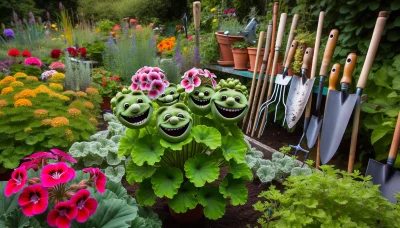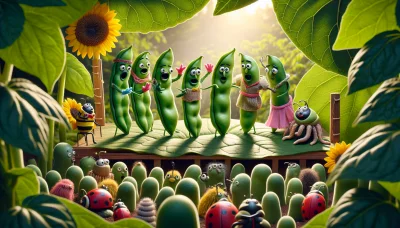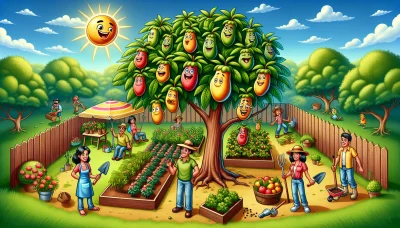Strawberry planting ideas Quiz
Test Your Knowledge
Question of
Strawberry Planting Ideas: Cultivate Your Garden
Growing strawberries in your garden brings not only the joy of cultivating your own delicious fruits but also the beauty and versatility they add to various garden settings. Whether you're integrating them into a vegetable garden, adding them to a flower bed for a pop of color, or creating a dedicated strawberry patch, these plants offer endless possibilities. The benefits of growing strawberries go beyond their taste and aesthetic appeal; they can also be a fun, educational project for gardeners of all ages, encouraging a closer connection to the food we eat.
Choosing the Right Strawberry Variety
When it comes to cultivating strawberries, selecting the right variety is crucial for success. The choice of strawberry variety can greatly influence not only the yield but also the flavor and size of the berries. Different varieties thrive in different climates and conditions, from cooler, temperate regions to warmer, subtropical areas. Moreover, some varieties are better suited for small garden spaces or even container gardening, offering flexibility for those with limited space. Understanding the specific needs and characteristics of each variety ensures a bountiful and delicious harvest.
Innovative Strawberry Planting Techniques
- Vertical Gardens: Utilize vertical space by planting strawberries in stacked planters or wall-mounted systems, allowing for greater yield per square foot.
- Hanging Baskets: Suspend strawberries in hanging baskets to save ground space, reduce pest issues, and ease the harvesting process.
- In-Ground Planting: Optimize traditional in-ground planting by using raised beds or strategic spacing techniques to improve air circulation and reduce fungal diseases.
Soil and Sunlight: Foundations for Thriving Strawberry Plants
For strawberry plants to flourish, they require well-drained, sandy loam soil with a pH between 5.5 and 6.8. This slightly acidic environment is ideal for strawberries, allowing them to absorb nutrients effectively. Additionally, ensuring the soil is rich in organic matter can significantly enhance plant growth and fruit production. When it comes to sunlight, strawberries need full sun exposure, ideally receiving at least 6 to 8 hours of direct sunlight per day. This ample sunlight is crucial for maximizing fruit production, helping the plants to develop strong, healthy fruits. By meeting these soil and sunlight requirements, gardeners can create the perfect conditions for growing vibrant, fruitful strawberry plants.
Watering and Fertilization Strategies
For optimal growth, strawberry plants require careful watering and fertilization. It's crucial to maintain a balance, as over or under-watering can harm the plants. Water the strawberries deeply but infrequently to encourage strong root development, aiming for about 1 to 1.5 inches of water per week, including rainfall. The best time to water is in the early morning, which helps minimize evaporation and the risk of fungal diseases. When it comes to fertilization, use a balanced 10-10-10 fertilizer in the early spring as new growth appears and again in late summer after harvesting. Avoid over-fertilizing, as this can lead to excessive leaf growth at the expense of fruit production. Monitoring soil moisture and nutrient levels regularly will help ensure your strawberry plants thrive.
Pest Management and Disease Prevention
Protecting strawberry plants from pests and diseases is crucial for a healthy and productive garden. There are both natural and chemical methods available to gardeners. Natural methods include introducing beneficial insects that prey on harmful pests, practicing crop rotation to prevent disease buildup, and using barriers such as row covers to protect plants. On the other hand, chemical methods involve applying pesticides and fungicides to control pest populations and prevent disease. While chemical methods can be effective, they should be used judiciously to minimize environmental impact and ensure the safety of beneficial insects. Combining both approaches thoughtfully can lead to a successful and sustainable strawberry garden.
Harvesting and Enjoying Your Strawberries
Harvesting strawberries at the right time is crucial for enjoying their full flavor and nutritional benefits. The best time to pick strawberries is in the early morning when they are still cool. Look for berries that are fully red, with no white or green spots, as these are indications that the fruit is ripe and ready for consumption. Gently twist the berries off the stem to avoid bruising them. After harvesting, it's important to either consume or process strawberries quickly, as they are perishable and can spoil within a few days. For those looking to savor their harvest, strawberries can be enjoyed in a variety of ways. Fresh strawberries can be added to salads, desserts, or eaten on their own. They also freeze well for later use in smoothies or jams. With the right care, harvesting and enjoying your strawberries can be a rewarding experience that brings a taste of summer into your home.












